
Date: 2025-10-22 Page is: DBtxt003.php txt00012088
Technology ... Ships
Military Technology
What can the USS Zumwalt do, that other ships can't?
Burgess COMMENTARY
Peter Burgess
Military Technology What can the USS Zumwalt do, that other ships can't? Ross Hall · Upvoted by Edwin Khoo, AFV Operator, Singapore Armed Forces and Craig Newmark
The US Navy is a fairly conservative organization. However, it also has a very capable technical, research, and engineering depth, which allows it to investigate, discover and implement some very far-sighted technologies. The implementation of nuclear reactor technologies into submarines is an excellent example.
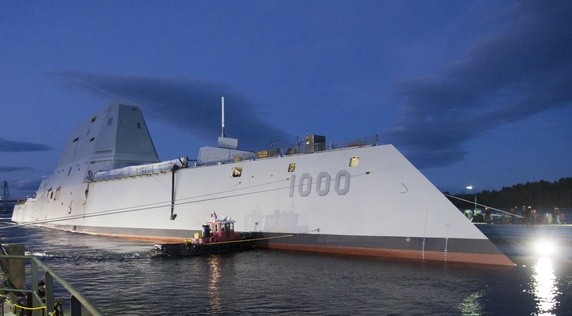 Historically, when the Navy deploys a new ship class, no more than three new technologies are introduced. The Zumwalt class incorporates sixteen - this is unprecedented.
Historically, when the Navy deploys a new ship class, no more than three new technologies are introduced. The Zumwalt class incorporates sixteen - this is unprecedented.
Let’s take a look at some of them.
The most noticeable is the hull itself. Referred to as a “tumblehome” hull, its primary purpose is to reduce the ship’s radar signature. In this, it is very successful. It is reported that this 600 foot long ship has a radar signature similar to a fishing boat. This also caused some interesting design issues. It turns out, that even the flag mast at the aft of the ship increases the radar signature, so provisions have been made to remove it when needed. Additionally, corner reflectors are required to allow the ship to be observed on radar during normal operations.
When the new hullform was initially reviewed, concerns were raised about seakeeping capabilities. The Navy conducted extensive tests, both in an engineering basin, and with scale models underway (in the Chesapeake Bay) to ensure that the ship is completely seaworthy.


Another innovation is the composite deckhouse, and integrated sensors. The deckhouse was constructed separately and then barged to the shipyard to be mated to the hull. The use of composite materials for the deckhouse further enhances reduced radar signatures, and the decrease in weight helps with center of gravity and seakeeping design. The integration of the sensors into the deckhouse avoids the usual masts and radomes observed on most combatants. The advanced radars are similar to those being installed on the Ford-class carriers.
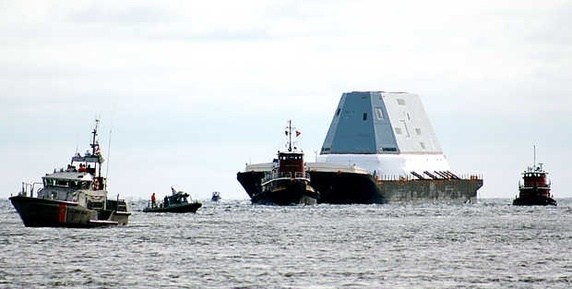
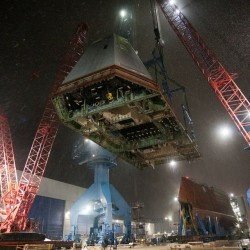
The use of a Peripheral Vertical Launch System contributes to ship survivability.
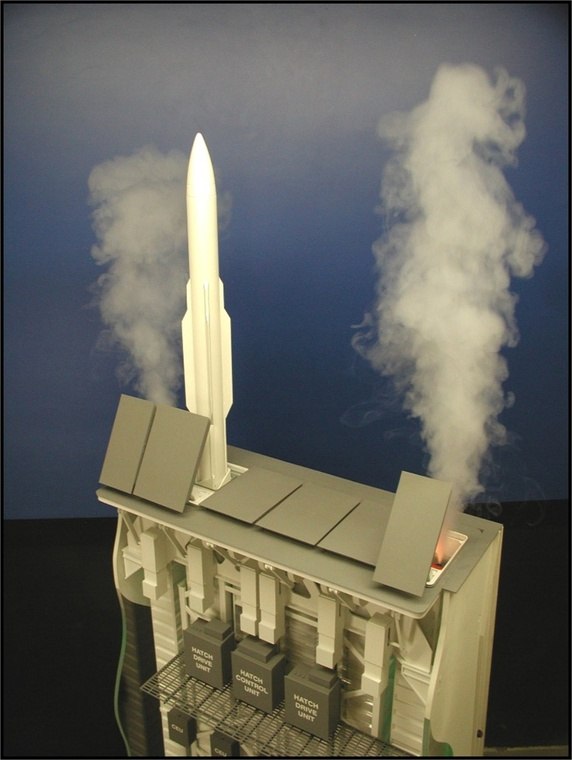
In previous designs (such as the Arleigh Burke class), the missiles are stored in central magazines. This allows for the possibility of catastrophic loss in the event the magazine is penetrated. In the Zumwalt class, the missiles are distributed around the perimeter of the ship. In the event of a hit, the damage will be limited to adjacent cells.
The Zumwalt class has a very integrated command and control system, referred to as the Total Ship Computing Environment (TSCE). This system will also be employed on the Ford-class carriers, and is likely to be the model for future combatants.
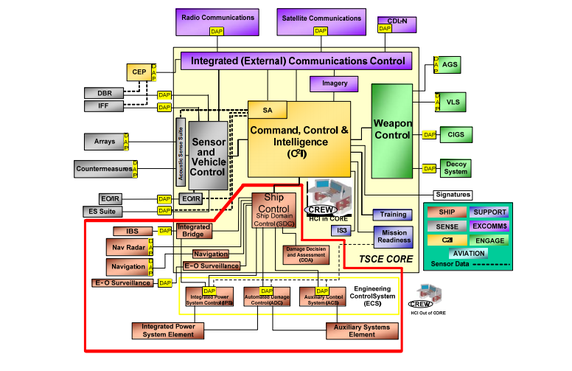
TSCE incorporates advanced automation features. This allows the ship, which is approximately 50% larger than current destroyers, to operate with a crew that is approximately 50% smaller. An example is the engineering system - on Arleigh Burke destroyers, eight crewmembers man the system while underway; on the Zumwalt class, one operator (in the command center) operates the engineering system. The ship also incorporates extensive automated damage control features.
The ship has dual bow-mounted sonars which provided greater detection capabilities.
How about a flight deck that is 90% larger than the Arleigh Burke deck?
Most folks don’t realize that the ship can accommodate two RHIBs.
For a discussion of the Integrated Power System (electric drive), the Advanced Gun System, and the capability to incorporate the electromagnetic rail gun (and laser weapon systems), see Ross Hall's answer to Why aren't there bigger guns on modern destroyers?
Summary
In my opinion, the Zumwalt class is far ahead of its time. Once it is deployed, and demonstrates its capabilities and advanced technologies, I believe Congress will authorize more, and many of the capabilities will routinely be incorporated into future naval combatants.
Also, the first captain of the USS Zumwalt is Captain James Kirk. How cool is that?
41.1k Views · View Upvotes